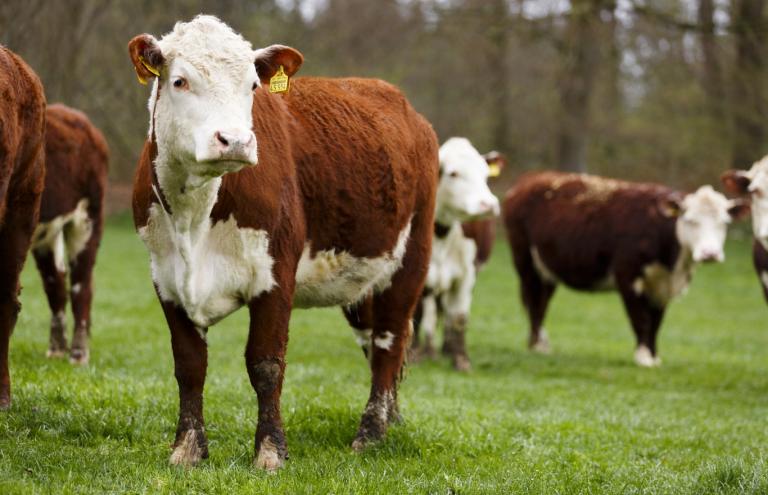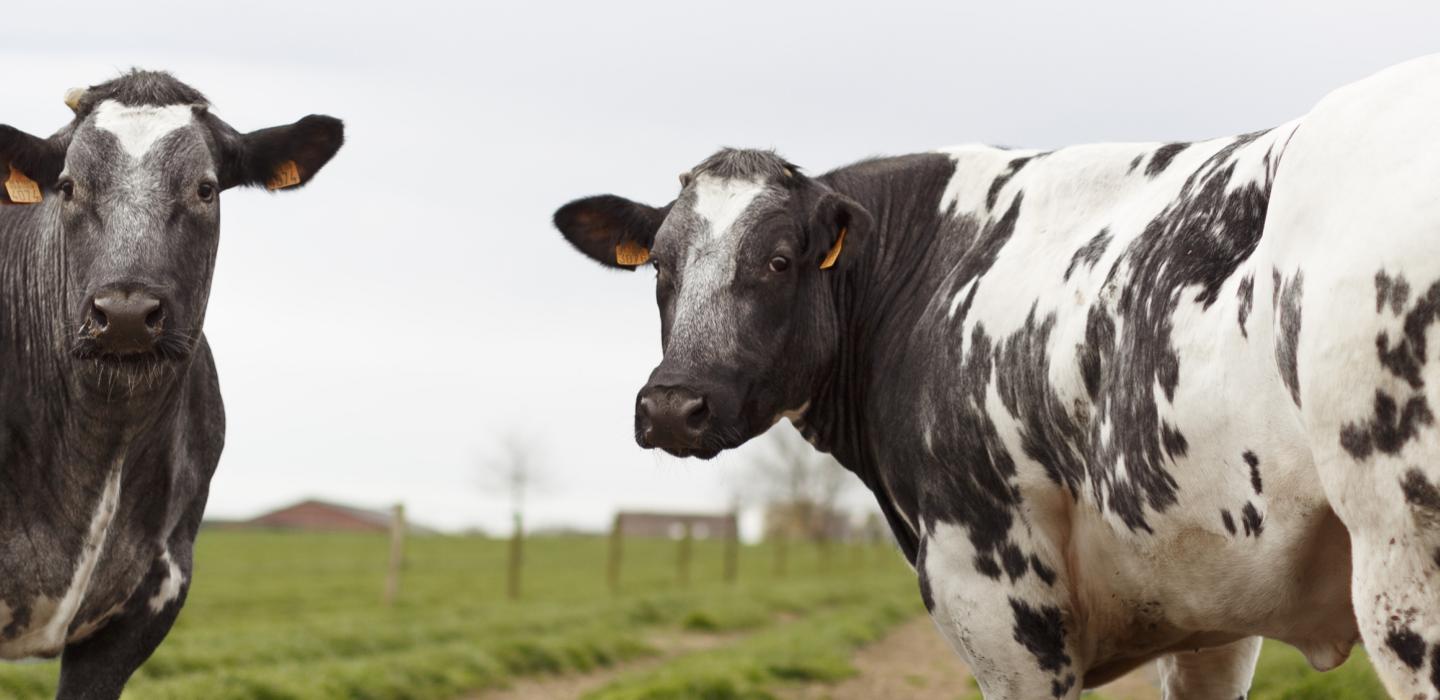If you want to enjoy some nice, quality beef, you have to look at the country of origin. And there’s no better than Belgium, the beef specialist in Europe. The most important ingredient to its success? A good product. And where better to start than at the foundation, i.e. the cattle breeds? Read more about the various cattle breeds below.
Belgian white blue
Since the second half of the 19th century, this unique breed has been Belgium’s national pride.
- With a share of 85%, the Belgian white blue is the most common meat breed in Belgium.
- Belgian white blue are recognizable by the white heads with bluish spots to a completely blue coat. They have a remarkably developed muscle mass, and the clearly recognizable rump contains a huge amount of meat.
- That meat is super tender, with lots of character and taste, and only little fat.
- The slaughter yield of the animals can be up to 70% or more for young bulls.
- The carcass yield is more than 80% with a high proportion of tender, quality cuts.
Thanks to the high slaughter yield and the high percentage of quality cuts, the footprint is very low compared to other cattle species, and Belgian white blue is a popular breed with beef abattoirs.
Hereford

- Herefords have a curly deep red coat, a white head and a white line down the neck and withers.
- They are Irish in origin but have become perhaps the most common meat race in the world.
- The meat is highly marbled and has a noticeable natural flavour—perfect for connoisseurs.
Red-pied breed

- This sturdy breed of double-purpose cattle has a remarkably sturdy physique, with a white coat and red to dark red posts.
- Their meat is tender, deep red and has a deep flavour.
White-red breed

- The rich history of this versatile breed goes back to the sixteenth century, as part of the Ayrshire breed.
- These animals are bred especially in East Flanders
- They are recognizable by their prominent white coat and the red colour on their head and neck.
- As dairy cattle, White-red cattle are very productive, with an average milk production of 5,834 kg per annum; as meat cattle, they are praised for their lean meat with full flavour.
Red breed

- The red breed has been bred since 1770
- For a long time, they were used only as a double-duty breed, but in the last fifty years, a 100% meat breed has also been bred. The meat is widely praised for its excellent quality and characterful taste. This West Flanders regional product is, therefore, gaining a lot of popularity.
- They are recognizable by their homogeneous dark red coat
Charolais

- One of the largest, oldest meat breeds in the world, originally from France.
- The animals are quite rugged in build (study and large) and tend to grow little fat.
- Charolais meat can compete with the best meat in the world—not only in terms of taste but also as regards marbling and tenderness. The meat is fairly coarse-fibred, yet tender and mild. Because of the natural grass grazing and herbs, it is very tasteful.
Blonde d'Aquitaine

- Blonde d’Aquitaine cattle were developed through a long process of cross-breeding
- They can survive on limited food supply, have little calving problems and have a strong herd instinct.
- They are very tall and robust cattle.
- The muscling, taste, colour, tenderness and fat coverage make the meat highly sought after.
Limousin

- The Limousin breed thrives on vast, natural meadows. These meadows may be sparse, but they still contain lots of nutrients, thus ensuring a healthy strong cattle breed.
- The smaller red-brown cattle are very fertile and easily adapt to their environment. This leads to excellent quality in meat, thanks to good muscle development and fine fibres.
